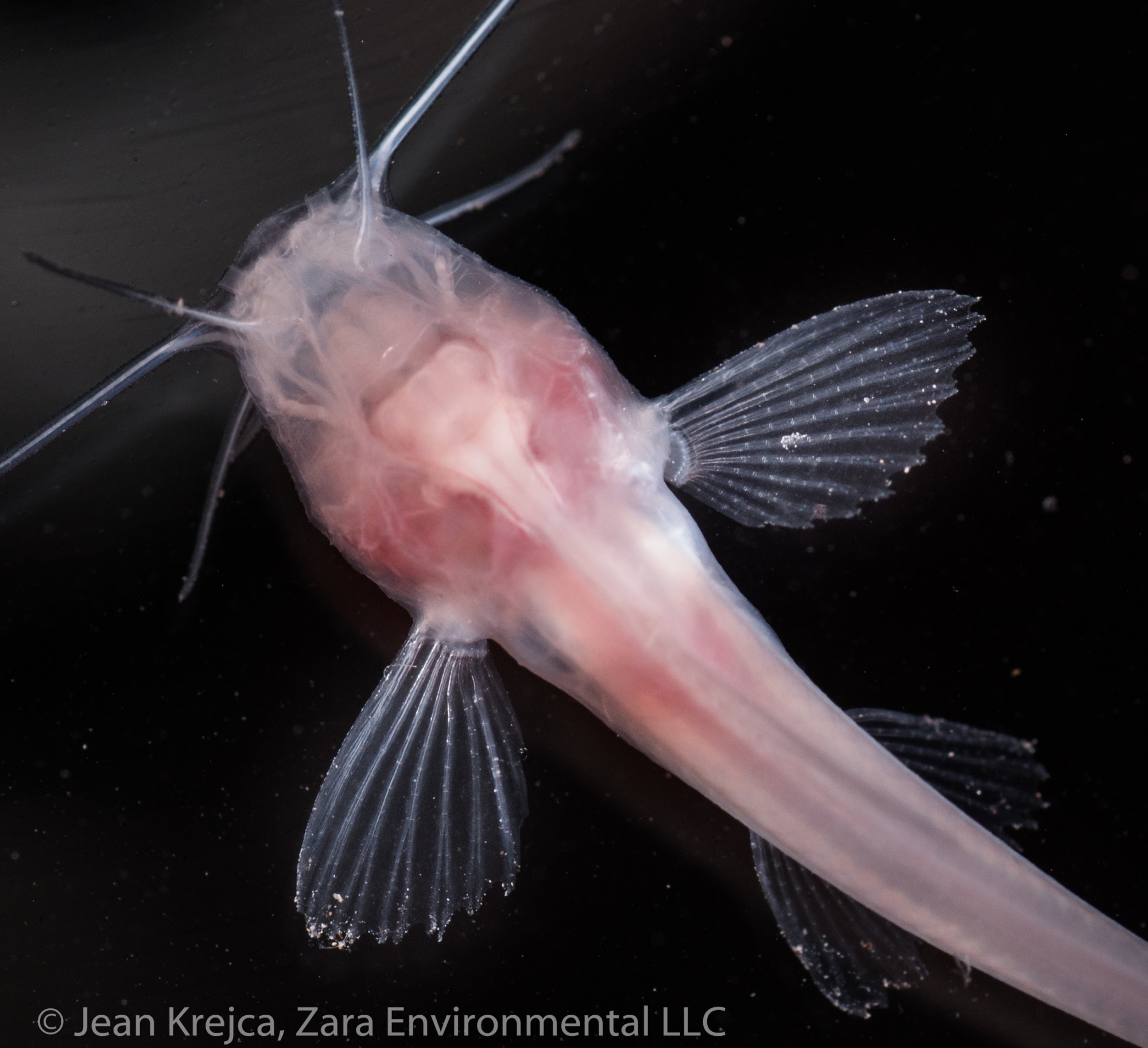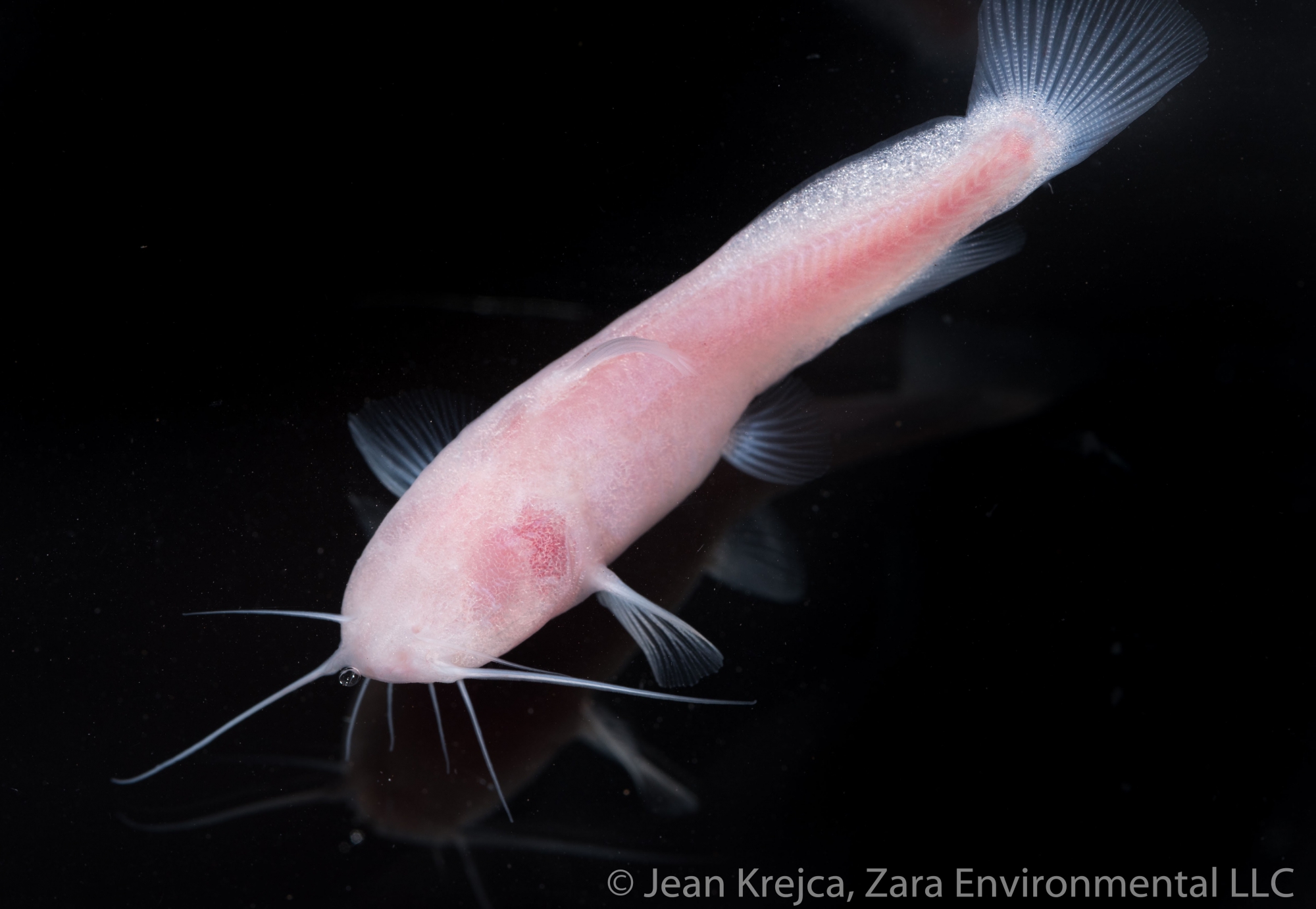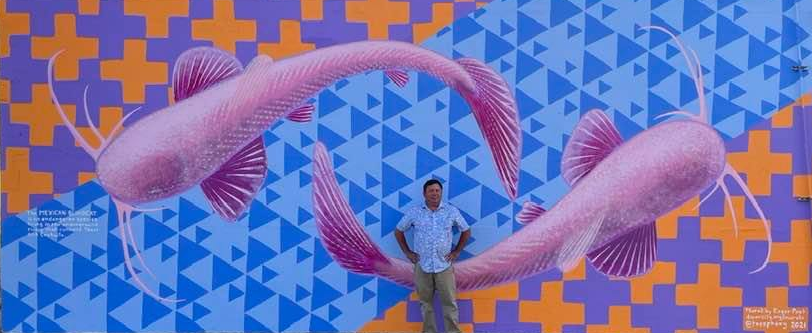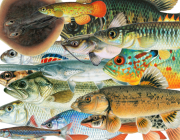
|

|
Prietella phreatophila - live specimens from Amistad National Recreation Area, Texas (photos by Jean Krejca)
October 16, 2021 - Mexican Blindat is the focus of a great mural in Del Rio, Texas. Thank you Del Rio and Center for Biological Diversity (and Andy Gluesenkamp for this photo from the unveiling party).

Hendrickson's work with Mexican blindcats and many collaborators on both sides of the border goes way back, starting with serious explorations of caves throughout northern Coahuila and Tamaulipas in the 1990s and early 2000s to learn more about both Prietella species. Unlike the deep Edwards Aquifer blindcats, humans can at least access the habitats of both of these, but only by rappeling into some deep caves, and then sometimes SCUBA diving after getting off rope. As a result of those explorations, we now know (Hendrickson et al. 2001) of at least 10 caves or wells where Prietella phreatophila lives, or, from what local residents tell us, where they used to be found in recent history, and much later they finally turned up in Texas too (as we long suspected). Morphology and unpublished DNA sequences both indicate the Texas and Coahuila specimens are of the same species, adding more evidence to support management of the Edwards-Trinity aquifer as binationally shared between the U.S. and México.
With support from National Park Service, we continue to explore caves on Amistad National Recreation Area, where the new discovery was made. We're hoping to get back to sampling in Coahuila soon to re-assess how the species is doing there, and to get more DNA samples for more detailed population genetics analyses that should help us better understand the fish, and better assess the true extent of its internationally shared aquifer. We are currently working on a manuscript that provides a range-wide conservation assessment for P. phreatophila. We published one of our presentations about that here.

